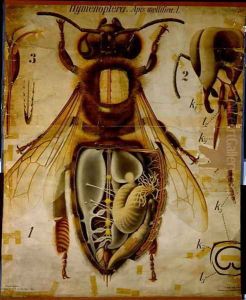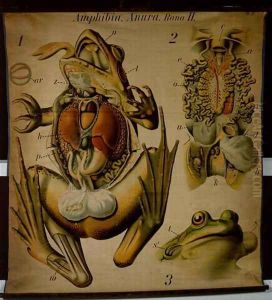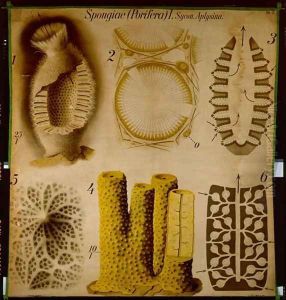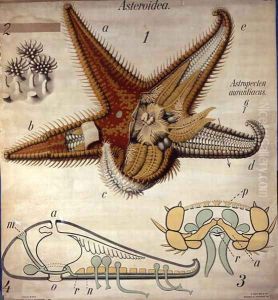Paul Pfurtscheller Paintings
Paul Pfurtscheller was an Austrian zoologist and biology teacher best known for his didactic wall charts that illustrated a wide variety of animals, which were used as educational tools in schools and universities. Born in Innsbruck, Austria, on July 26, 1855, Pfurtscheller was not only an educator but also a scientific illustrator who had a significant impact on the visual communication of biological concepts during the late 19th and early 20th centuries.
After studying at the University of Innsbruck, he became a teacher and dedicated himself to improving the quality of biological education. Recognizing the limitations of textbook illustrations and the difficulty of using actual specimens in the classroom, Pfurtscheller began creating detailed and accurate wall charts that depicted various animal species. These charts were notable for their scientific accuracy, attention to detail, and didactic effectiveness. His work caught the attention of the scientific and educational community, leading to widespread use of his charts in educational institutions.
Pfurtscheller's series of zoological wall charts, entitled 'Zoologische Wandtafeln,' included over 100 charts and were published over several years, starting in the 1880s. The charts covered a wide range of subjects, from invertebrates such as insects and mollusks to vertebrates like birds, mammals, and human anatomy. His contribution to zoological education was significant, providing a valuable resource for students and teachers alike.
Throughout his career, Pfurtscheller's approach was characterized by meticulous research and artistic skill, which allowed him to create representations of organisms with both scientific precision and aesthetic appeal. His work is considered a precursor to modern biological visualization techniques and continues to be of historical and educational interest.
Paul Pfurtscheller passed away on March 27, 1927, in Vienna. His legacy endures through the continued use and appreciation of his educational charts, which remain relevant as historical documents and as a testament to the intersection of art and science in educational materials.



